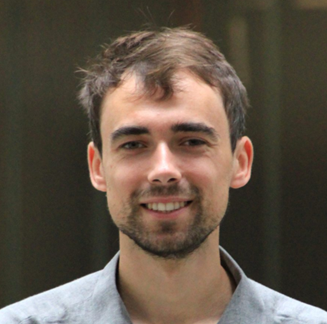A leap forward for affordable solar power
University of Toronto researchers used the CLS to gain insight into solar cell material in hopes to make solar power more efficient and affordable.
Silicon has been the standard material used for solar cells, but perovskites, materials based on the same crystal structure as calcium titanium oxide, are gaining ground and quickly, Teale said.
Perovskite is preferable because it is cheap. The average perovskite solar cell is about one per cent of the width of a human hair, so very little material is required. By comparison, silicon, identified as a semi-conductor about 80 years ago, requires expensive, multi-step and high-temperature preparation processes.

The best performing perovskite solar cells meet or exceed the performance of silicon cells found on roofs today in terms of efficiently converting sunlight into energy. These competitive perovskite cells have the 2D/3D structure that Teale and his team watched emerge.
This structure is created by applying specific coatings to the surface, which heals defects on the material’s surface. Since the discovery of this technique around 4 years ago, efficiency of the perovskite solar cell jumped from 20 to above 25 per cent, “making it a viable candidate to overtake silicon,” Teale said.
Importantly, it also improves the working lifetime of cells. Rapid advances in perovskite research have seen cell efficiency rocket from the original four per cent to 25.5 per cent today, and applying coating treatments “has become a staple of fabrication.”
“It was a big boon to discover you can take cheap molecules, coat them onto a cell and improve its efficiency and lifetime by such a large margin.
Optimizing this surface healing holds the most hope for perovskite to reach what Teale termed “the Holy Grail” for solar cells – “operating for 1,000 hours at 85 degrees Celsius and 85 per cent relative humidity, and not dropping below 85 per cent of its initial efficiency.” However, no one had ever observed the molecular-level structural changes occurring because of healing treatments, making optimization challenging.
Teale said his team initially tried to peer into this molecular healing process about three years ago at the CLS. “We saw something, the glimmerings of something, but not enough to make any conclusions. We’re so pleased the CLS has continued with its technology upgrades because now, with the Brockhouse X-ray Diffraction and Scattering Beamlines, instead of seeing images at a frame rate of one every three seconds, we can see three frames every second. We could see how the 2D layer forms as the carbon layers intersects with the 3D layer.”
Using the synchrotron, the team had a highly-detailed view of crystals transforming into the new perovskite species. These details will help researchers to better produce a material that could be the future of solar energy.
Teale is confident perovskite will soon exceed silicon as the preferred material for solar cells; the question now is how to upscale the cells being produced in labs to create commercial products “that can sit on our roofs for 20 years.”
For Teale and his colleagues, that means heading back to the CLS to study techniques for controlling the molecular healing process in the hope of continuing to improve both efficiency and stability. They plan to be back at the CLS for more experiments in December.
Proppe, Andrew H., Andrew Johnston, Sam Teale, Arup Mahata, Rafael Quintero-Bermudez, Eui Hyuk Jung, Luke Grater et al. "Multication perovskite 2D/3D interfaces form via progressive dimensional reduction." Nature Communications 12, no. 1 (2021): 1-9.
